 W
WA physics engine is computer software that provides an approximate simulation of certain physical systems, such as rigid body dynamics, soft body dynamics, and fluid dynamics, of use in the domains of computer graphics, video games and film (CGI). Their main uses are in video games, in which case the simulations are in real-time. The term is sometimes used more generally to describe any software system for simulating physical phenomena, such as high-performance scientific simulation.
 W
WAlgodoo is a physics-based 2D sandbox freeware from Algoryx Simulation AB as the successor to the popular physics application Phun. It was released on September 1, 2009 and is presented as a learning tool, an open ended computer game, an animation tool, and an engineering tool.
 W
WAlgoryx Simulation AB was formed in 2007 in Umeå, Sweden as a spin-off company from Umeå University. Algoryx currently has three products: Algodoo, Dynamics for SpaceClaim, and AGX Multiphysics, a professional physics engine for engineering and real-time simulations.
 W
WBox2D is a free open source 2-dimensional physics simulator engine written in C++ by Erin Catto and published under the MIT license. It has been used in Crayon Physics Deluxe, Limbo, Rolando, Incredibots, Angry Birds, Tiny Wings, Shovel Knight, Transformice, Happy Wheels, and many online Flash games, as well as iPhone, iPad and Android games using the Cocos2d or Moscrif game engine and Corona framework.
 W
WBullet is a physics engine which simulates collision detection as well as soft and rigid body dynamics. It has been used in video games and for visual effects in movies. Erwin Coumans, its main author, won a Scientific and Technical Academy Award for his work on Bullet. He worked for Sony Computer Entertainment US R&D from 2003 until 2010, for AMD until 2014, and he now works for Google.
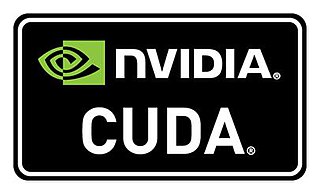 W
WCUDA is a parallel computing platform and application programming interface (API) that allows software to use certain types of graphics processing unit (GPU) for general purpose processing – an approach called general-purpose computing on GPUs (GPGPU). CUDA is a software layer that gives direct access to the GPU's virtual instruction set and parallel computational elements, for the execution of compute kernels.
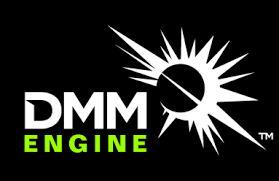 W
WDigital Molecular Matter, better known as simply DMM, is a proprietary middleware physics engine developed by Pixelux for generating realistic destruction and deformation effects. The offline version can support high-resolution simulations for use in movie special effects. The real-time version is designed for computer, video games, and other simulation needs by attempting to simulate physical real-world systems. Unlike traditional realtime simulation engines, which tend to be based on rigid body kinematics, the use of finite element analysis (FEA) allows DMM to simulate a large set of physical properties. Developers can assign physical properties to a given object or portion of an object, which allow the object to behave as it would in the real world. In addition, the properties of objects or parts of objects can be changed at runtime, allowing for additional interesting effects.
 W
WHavok is a middleware software suite developed by the Irish company Havok. Havok provides a physics engine component and related functions to video games.
 W
WNewton Game Dynamics is an open-source physics engine for realistically simulating rigid bodies in games and other real-time applications. Its solver is deterministic and not based on traditional LCP or iterative methods.
 W
WNext Limit Technologies is a computer software company headquartered in Madrid, Spain. Founded in 1998 by engineers Victor Gonzalez and Ignacio Vargasthe firm develops technologies in the field of digital simulation and visualization. In December 2016, the XFlow division was acquired by Dassault Systèmes.
 W
WOE-Cake, OE-CAKE! or OE Cake is a 2D fluid physics sandbox which was used to demonstrate the Octave Engine fluid physics simulator created by Prometech Software Inc.. It was one of the first engines with the ability to realistically process water and other materials in real-time. In the program, which acts as a physics-based paint program, users can insert objects and see them interact under the laws of physics. It has advanced fluid simulation, and support for gases, rigid objects, elastic reactions, friction, weight, pressure, textured particles, copy-and-paste, transparency, foreground and background images, and easy file sharing.
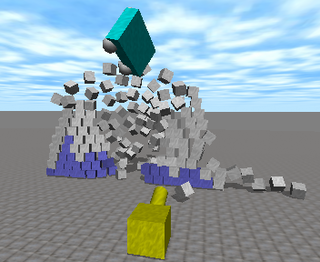 W
WThe Open Dynamics Engine (ODE) is a physics engine written in C/C++. Its two main components are a rigid body dynamics simulation engine and a collision detection engine. It is free software licensed both under the BSD license and the LGPL.
 W
WA particle system is a technique in game physics, motion graphics, and computer graphics that uses many minute sprites, 3D models, or other graphic objects to simulate certain kinds of "fuzzy" phenomena, which are otherwise very hard to reproduce with conventional rendering techniques – usually highly chaotic systems, natural phenomena, or processes caused by chemical reactions.
 W
WAlgodoo is a physics-based 2D sandbox freeware from Algoryx Simulation AB as the successor to the popular physics application Phun. It was released on September 1, 2009 and is presented as a learning tool, an open ended computer game, an animation tool, and an engineering tool.
 W
WThe Physics Abstraction Layer (PAL) is an open-source cross-platform physical simulation API abstraction system. It is similar to a physics engine wrapper, however it is far more flexible providing extended abilities. PAL is free software, released under the BSD license.
 W
WPhysX is an open-source realtime physics engine middleware SDK developed by Nvidia as a part of Nvidia GameWorks software suite.
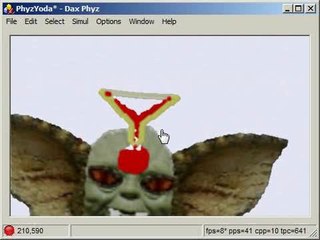 W
WPhyz is a public domain, 2.5D physics engine with built-in editor and DirectX graphics and sound. In contrast to most other real-time physics engines, it is vertex based and stochastic. Its integrator is based on a SIMD-enabled assembly version of the Mersenne Twister random number generator, instead of traditional LCP or iterative methods, allowing simulation of large numbers of micro objects with Brownian motion and macro effects such as object resonance and deformation.
 W
WRagdoll physics is a type of procedural animation used by physics engines, which is often used as a replacement for traditional static death animations in video games and animated films.
 W
WRealFlow is a fluid and dynamics simulation tool for the 3D and visual effects industry, developed by Next Limit Technologies in Madrid, Spain. This stand-alone application can be used in conjunction with other 3D programs to simulate fluids, water surfaces, fluid-solid interactions, rigid bodies, soft bodies and meshes. In 2008, Next Limit Technologies was awarded a Technical Achievement Award by the Academy of Motion Picture Arts and Sciences for their development of the RealFlow software and its contribution to the production of motion pictures. In 2015, Next Limit Technologies announced the release of RealFlow Core for Cinema 4D.
 W
WrFactor 2 is a computer racing simulator developed by Image Space Incorporated and since 2016 developed by Studio 397. rFactor 2 was released for Windows in 2012. Like its predecessor, rFactor, it is designed to be modified and is used by professional racing teams for driver training and race car development. Much of its source code is derived from rFactor Pro which is also used by professional racers and most of the Formula One teams and NASCAR manufacturers.
 W
WSimulation Open Framework Architecture (SOFA) is an open source framework primarily targeted at real-time physical simulation, with an emphasis on medical simulation. It is mostly intended for the research community to help develop newer algorithms, but can also be used as an efficient prototyping tool or as a physics engine.
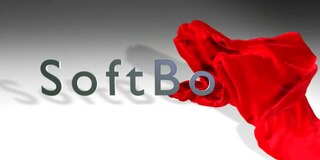 W
WSoft-body dynamics is a field of computer graphics that focuses on visually realistic physical simulations of the motion and properties of deformable objects. The applications are mostly in video games and films. Unlike in simulation of rigid bodies, the shape of soft bodies can change, meaning that the relative distance of two points on the object is not fixed. While the relative distances of points are not fixed, the body is expected to retain its shape to some degree. The scope of soft body dynamics is quite broad, including simulation of soft organic materials such as muscle, fat, hair and vegetation, as well as other deformable materials such as clothing and fabric. Generally, these methods only provide visually plausible emulations rather than accurate scientific/engineering simulations, though there is some crossover with scientific methods, particularly in the case of finite element simulations. Several physics engines currently provide software for soft-body simulation.
 W
WThe Tokamak Game Physics SDK is an open-source physics engine.